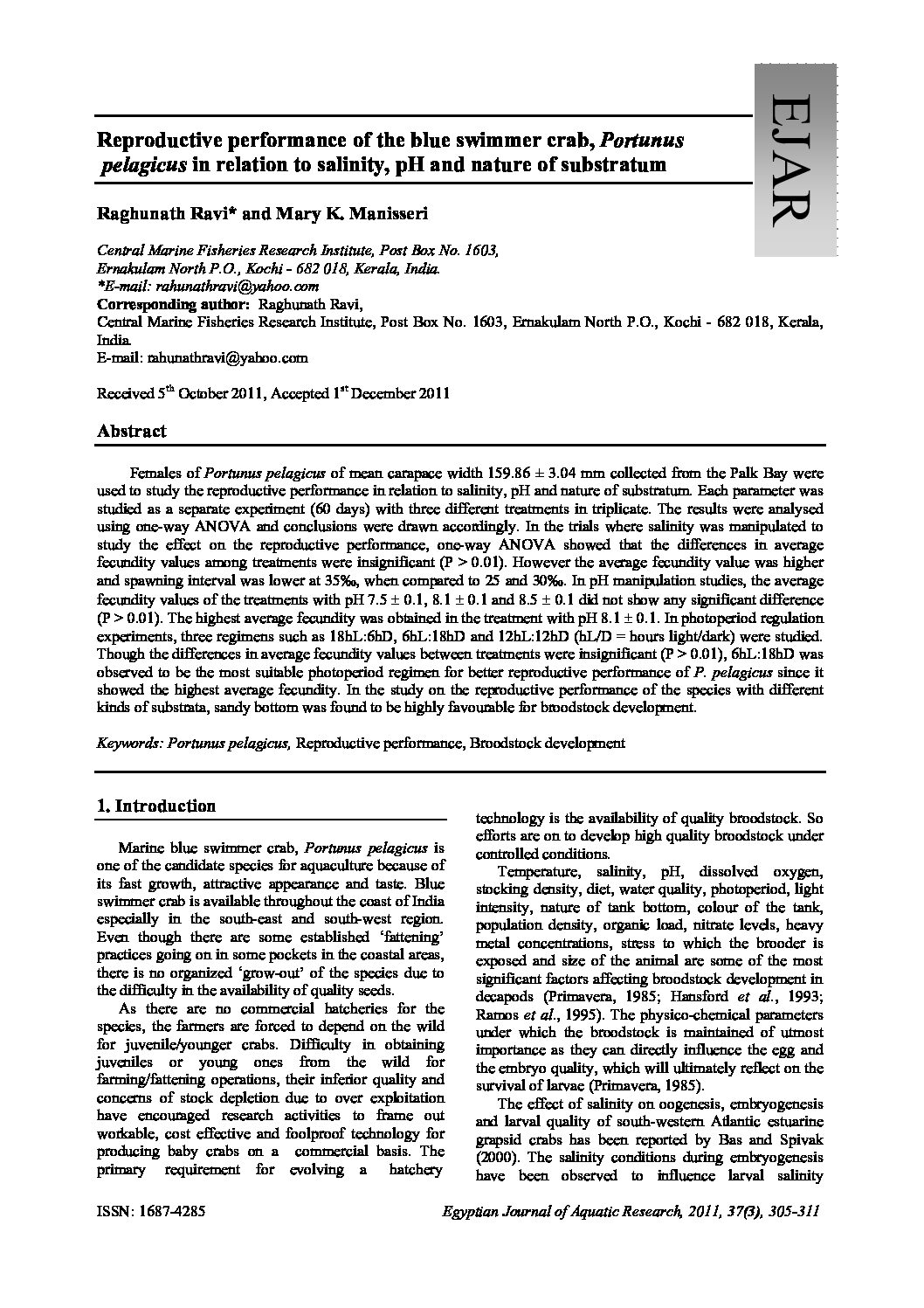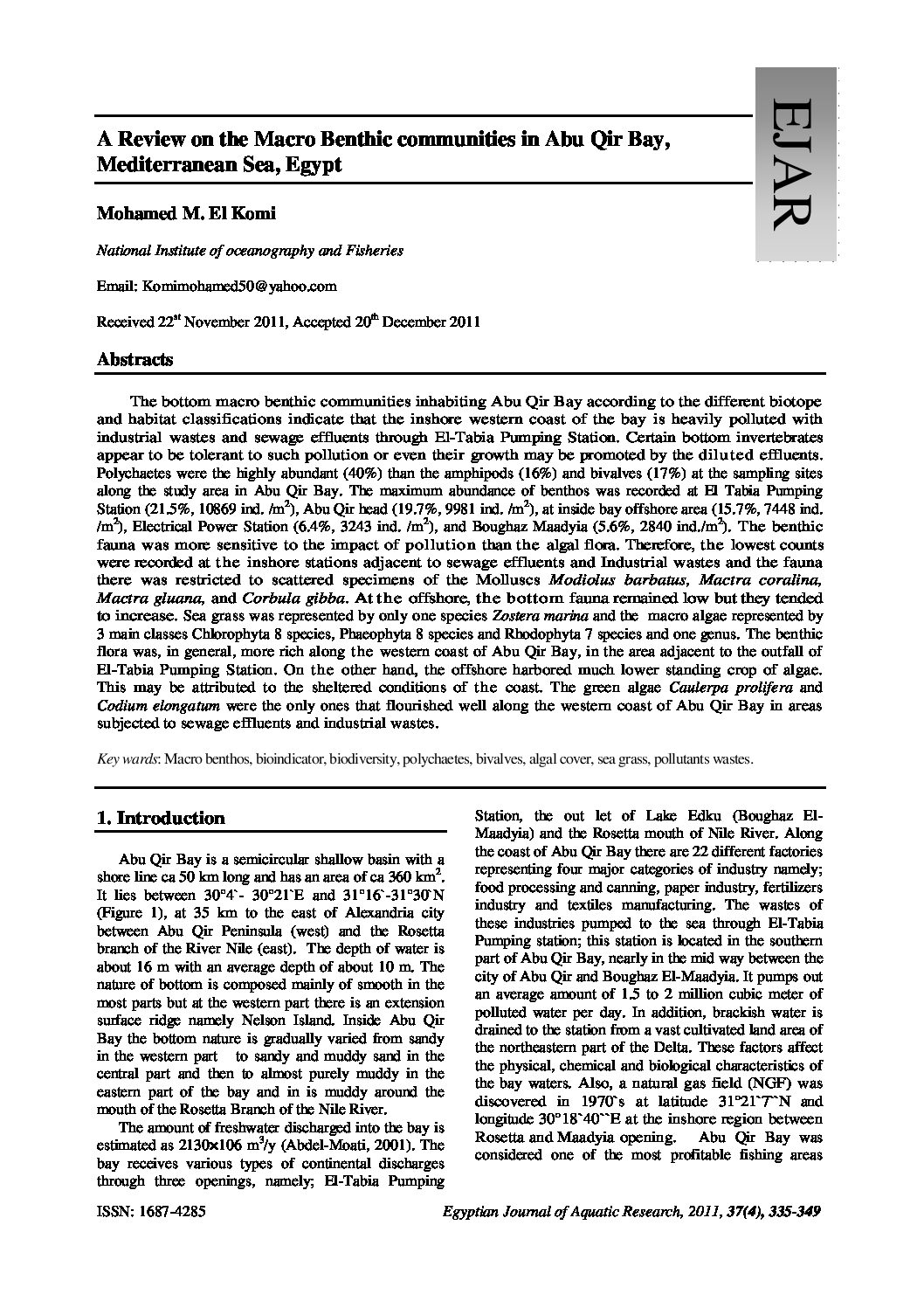Categories
vol-37Reproductive performance of the blue swimmer crab, Portunus
pelagicus in relation to salinity, pH and nature of substratum
Raghunath Ravi* and Mary K. Manisseri
Central Marine Fisheries Research Institute, Post Box No. 1603,
Ernakulam North P.O., Kochi – 682 018, Kerala, India.
*E-mail: [email protected]
Corresponding author: Raghunath Ravi,
Central Marine Fisheries Research Institute, Post Box No. 1603, Ernakulam North P.O., Kochi – 682 018, Kerala,
India.
E-mail: [email protected]
Received 5th October 2011, Accepted 1st December 2011
Abstract
Females of Portunus pelagicus of mean carapace width 159.86 ± 3.04 mm collected from the Palk Bay were
used to study the reproductive performance in relation to salinity, pH and nature of substratum. Each parameter was
studied as a separate experiment (60 days) with three different treatments in triplicate. The results were analysed
using one-way ANOVA and conclusions were drawn accordingly. In the trials where salinity was manipulated to
study the effect on the reproductive performance, one-way ANOVA showed that the differences in average
fecundity values among treatments were insignificant (P > 0.01). However the average fecundity value was higher
and spawning interval was lower at 35‰, when compared to 25 and 30‰. In pH manipulation studies, the average
fecundity values of the treatments with pH 7.5 ± 0.1, 8.1 ± 0.1 and 8.5 ± 0.1 did not show any significant difference
(P > 0.01). The highest average fecundity was obtained in the treatment with pH 8.1 ± 0.1. In photoperiod regulation
experiments, three regimens such as 18hL:6hD, 6hL:18hD and 12hL:12hD (hL/D = hours light/dark) were studied.
Though the differences in average fecundity values between treatments were insignificant (P > 0.01), 6hL:18hD was
observed to be the most suitable photoperiod regimen for better reproductive performance of P. pelagicus since it
showed the highest average fecundity. In the study on the reproductive performance of the species with different
kinds of substrata, sandy bottom was found to be highly favourable for broodstock development.
Keywords: Portunus pelagicus, Reproductive performance, Broodstock development







